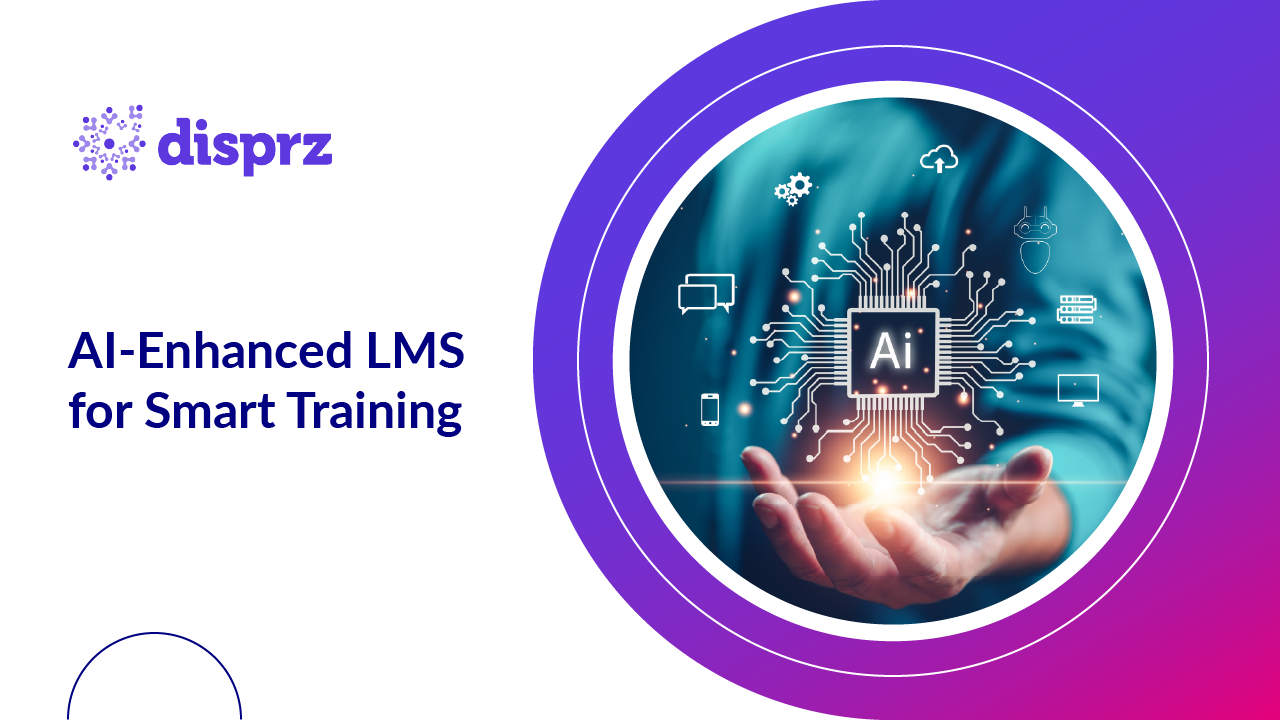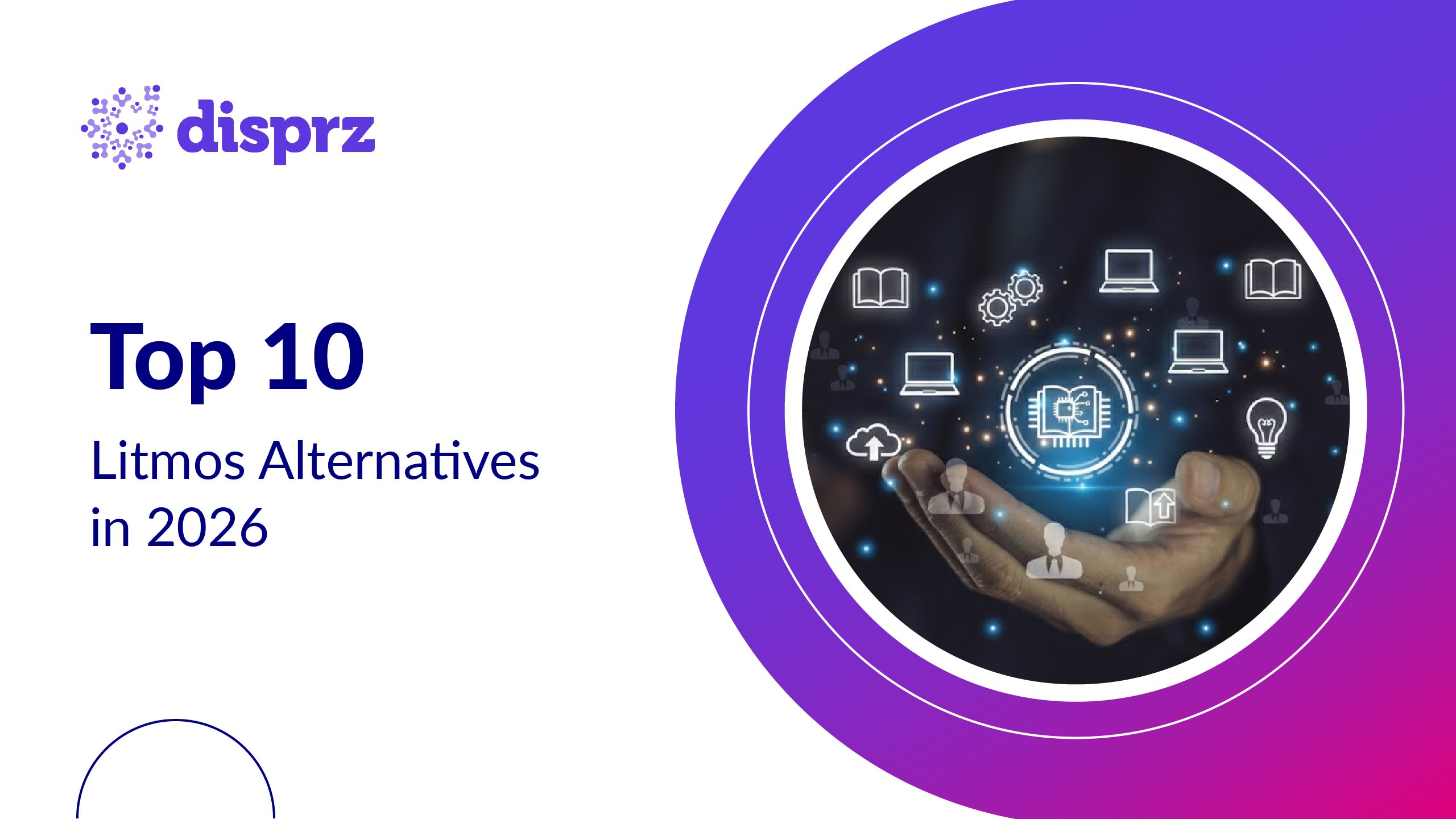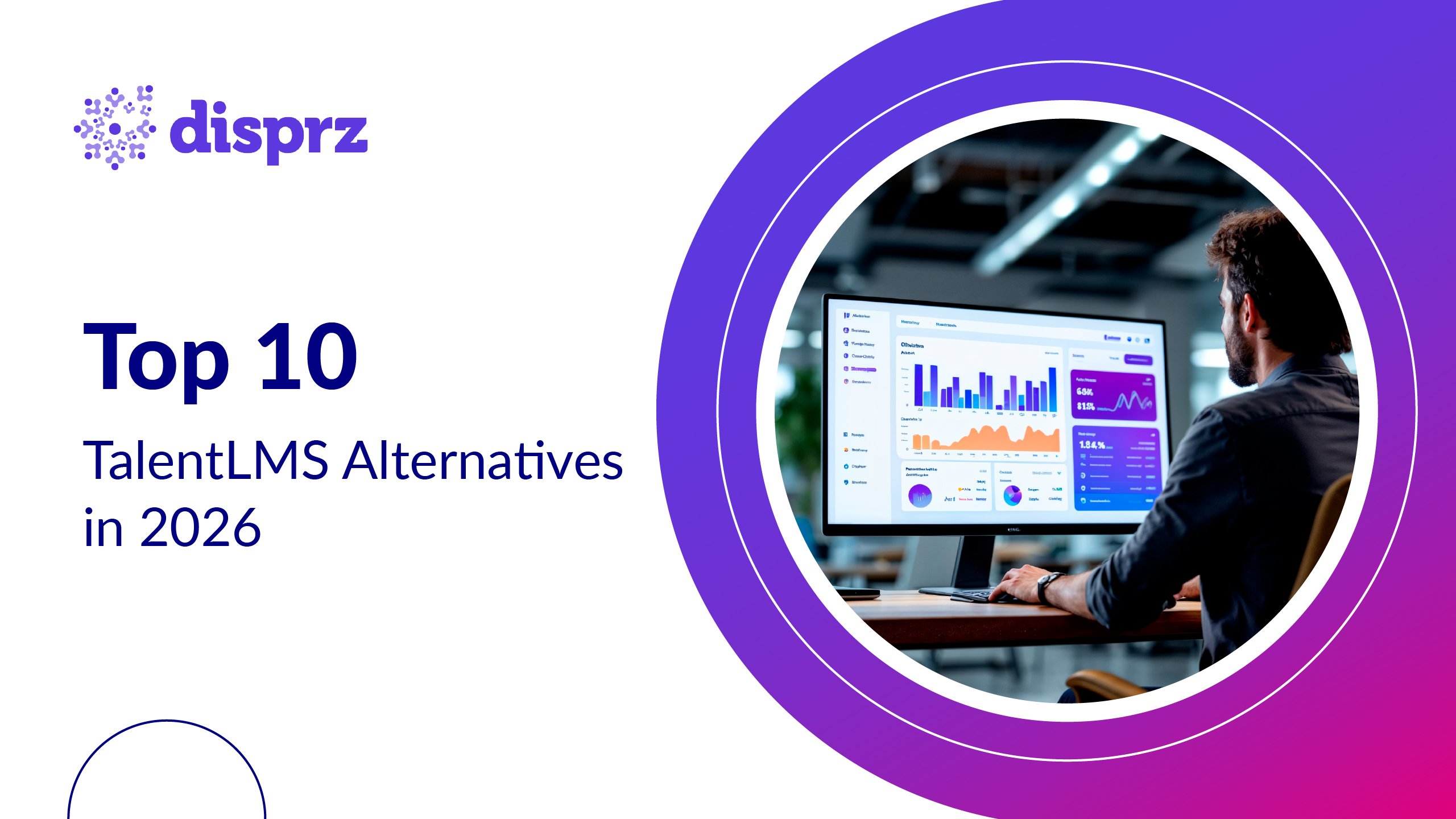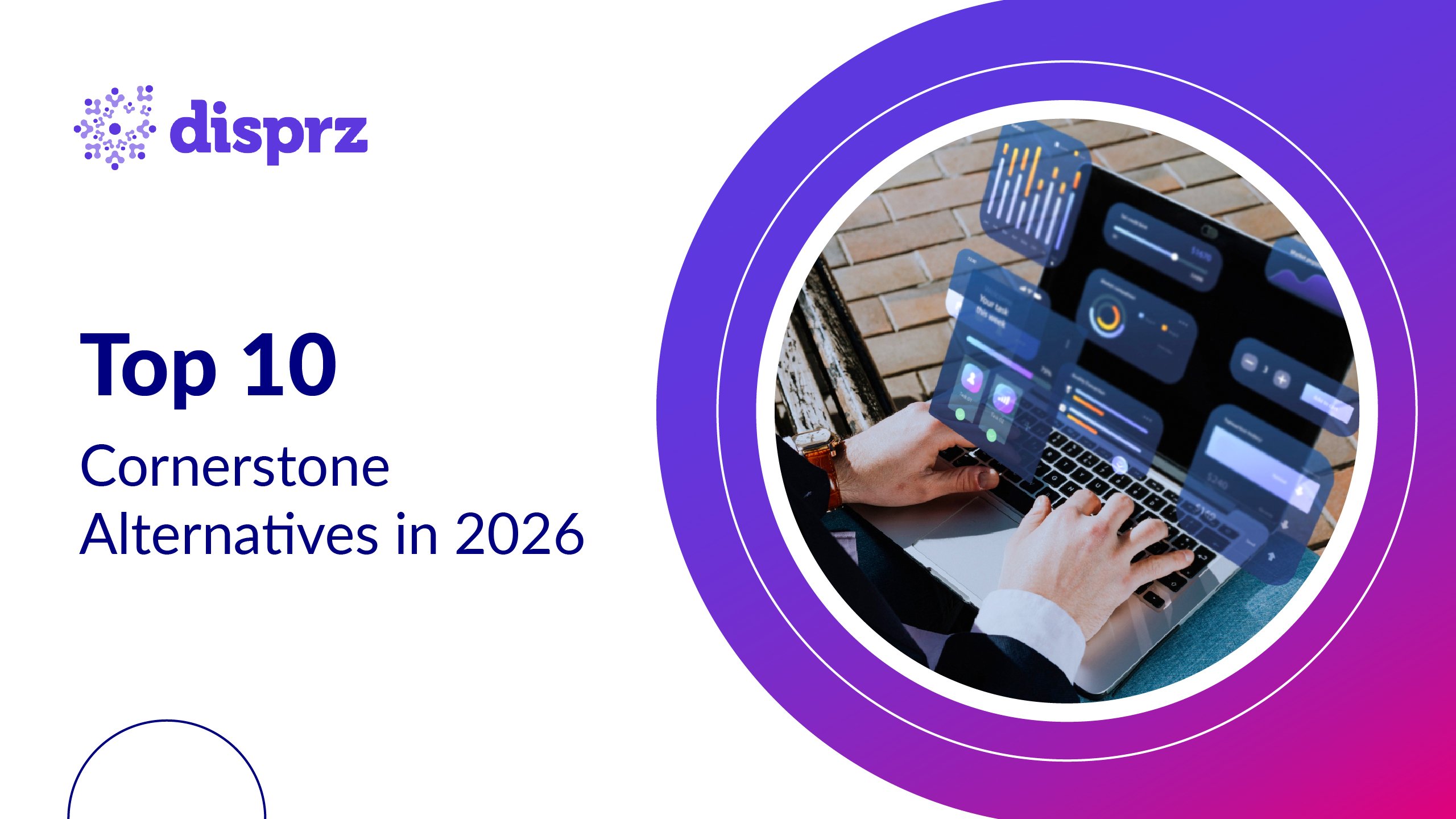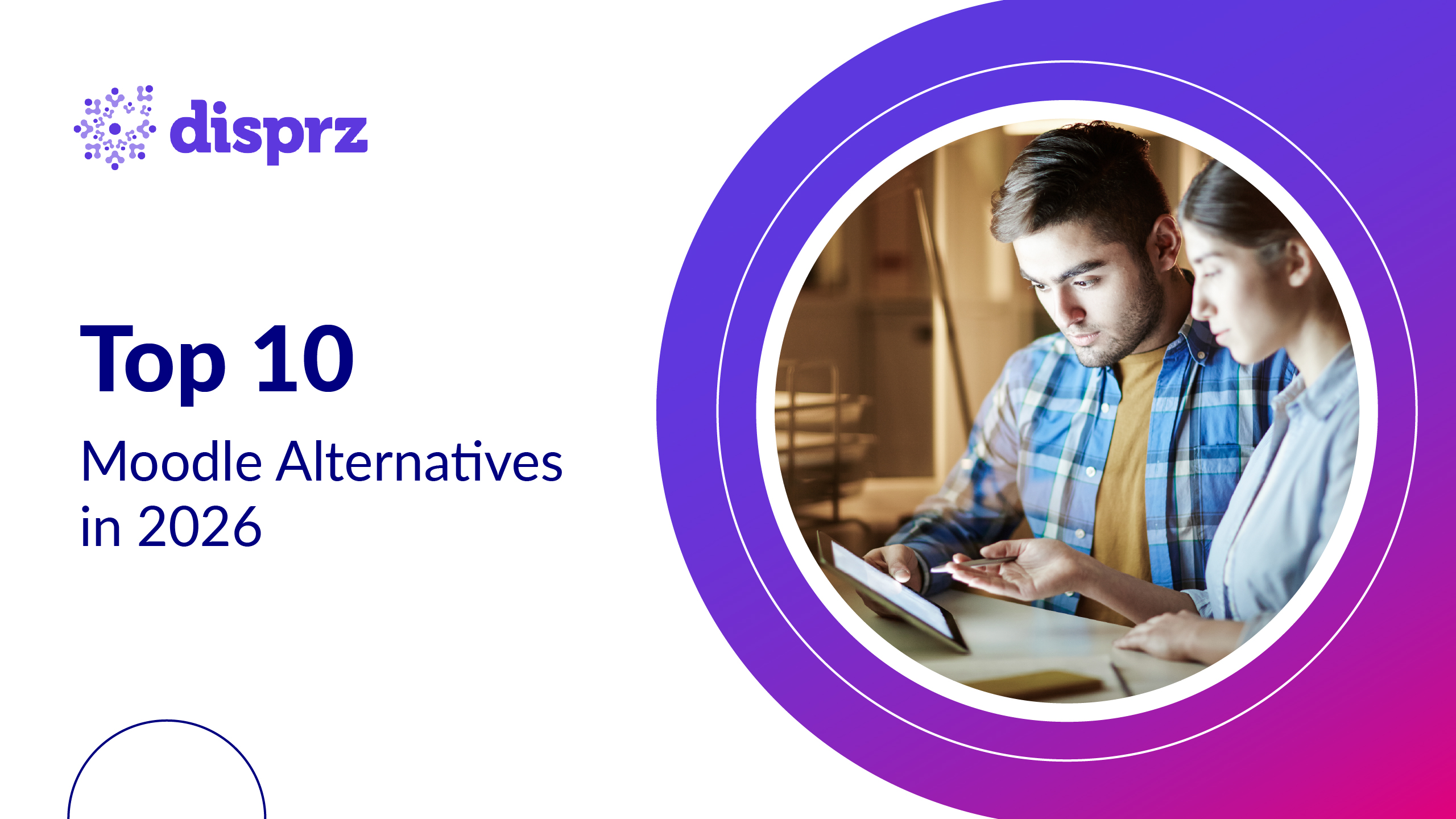The next time you log into your Learning Management System (LMS) platform, ask yourself this: Is it just a tool to push mandatory training and then manually pull data into Excel sheets? If that’s what your dashboard shows, such as completion rates and a long list of course names, you’re stuck in the past.
An LMS dashboard for employees should be more than a static display of data; it should be an intelligent control center. With AI-powered dashboards, corporate training evolves from a one-size-fits-all approach to a dynamic, data-driven strategy tailored to every employee’s growth. Let’s explore how AI is redefining LMS dashboards and why they’re a must-have for 2025.
What is an LMS Dashboard?
An LMS or Learning Management System dashboard is the command center of a corporate training platform, providing a centralized interface where L&D leaders, managers, and employees can access key training data, learner progress, and insights at a glance. Instead of digging through multiple reports or manually compiling data, an LMS dashboard for employees consolidates everything in one place, making it easier to track training activities, assess effectiveness, and make informed decisions.
The Purpose of an LMS Dashboard
A well-designed LMS dashboard serves as more than just a display of statistics; it acts as a strategic tool that helps:
L&D Teams – Monitor overall training effectiveness, ensure learning objectives align with business goals, and optimize strategies.
Managers – Gain visibility into team progress, identify high-potential employees, and address skill gaps in real-time.
Employees – Track their own learning journeys, receive personalized recommendations, and stay motivated with progress indicators.
By visualizing training data, an LMS dashboard eliminates manual tracking and provides instant insights that fuel data-driven decision-making in learning.
Traditional vs. AI-Powered LMS Dashboards: What’s the Difference?
|
Feature |
Traditional LMS Dashboard |
AI-Powered LMS Dashboard |
|
Data Insights |
Static reports, historical data |
Real-time analytics, predictive insights |
|
Personalization |
Same training for all learners |
Adaptive learning paths based on skills & performance |
|
Skill Gap Analysis |
Manual tracking & spreadsheets |
AI-driven gap identification & recommendations |
|
Reporting & Compliance |
Basic course completion tracking |
Automated compliance tracking & reporting |
|
Engagement Tools |
Generic reminders & notifications |
AI-driven nudges based on learner behavior |
|
Assessment & Feedback |
Standardized tests |
Adaptive assessments with real-time feedback |
|
Integration Capabilities |
Limited integrations |
Seamless connectivity with HRMS, performance tools, and third-party apps |
Top 10 Features of an AI-Powered LMS Dashboard

1) Real-Time Learning Analytics
Tracking learner progress manually can be time-consuming and inaccurate, leading to missed insights. With real-time analytics, L&D teams gain immediate access to performance data, enabling quick interventions to improve outcomes. This helps optimize training strategies and keeps the workforce on track.
2) Personalized Learning Paths
Generic training programs often result in disengagement and inefficiencies. The platform ensures that each employee receives relevant training by tailoring learning paths to individual skill sets, job roles, and career goals. This personalization increases engagement and makes learning more effective.
3) Skill Gap Analysis & Predictive Insights
Just tracking the number of learning hours and completion rates won’t provide much info on individual employee strengths and weaknesses. An AI-powered LMS admin dashboard identifies existing skill gaps and predicts future training needs. This helps organizations proactively upskill employees and stay competitive.
4) AI-Powered Assessments & Feedback
Traditional assessments often fail to meet the needs of diverse learners. Adaptive quizzes adjust difficulty levels based on the learner's performance, providing instant, customized feedback. This approach keeps learners challenged while offering continuous support for improvement.
5) Automated Compliance Tracking
It becomes difficult for HR and L&D teams to manually enroll employees and log the completion data when facilitating compliance training for, say,1000 employees. Manually tracking compliance training can lead to missed deadlines and compliance risks. Automated compliance tracking ensures that training requirements are met on time, with timely reminders and reporting. This reduces administrative workload and helps organizations maintain regulatory standards.
6) Intelligent Nudges & Reminders
Employees often forget or delay completing training due to competing priorities. AI-driven nudges and reminders prompt learners at key moments, keeping them engaged and on track. This feature increases course completion rates and helps maintain consistent learning progress.
7) Chatbots & Virtual Assistants
Learners often face technical issues or have questions about course content, leading to interruptions in their training. Chatbots and virtual assistants offer 24/7 support, providing immediate answers to queries and troubleshooting problems. This ensures learners stay focused and minimizes downtime.
8) Dynamic Content Curation
It can be difficult to find the most relevant, up-to-date materials for employees as industries and roles evolve. AI-powered content curation suggests trending, role-specific resources based on learners’ interests and current skills. This ensures employees always have access to the latest and most relevant training content.
9) Training ROI Measurement
Without clear metrics, it’s hard to gauge the success of training programs. AI-driven ROI measurement links training outcomes directly to business KPIs, providing valuable insights into the effectiveness of learning initiatives. This allows organizations to refine strategies and demonstrate the impact of training on business performance.
10) Seamless Integrations
Managing training data across multiple systems can create silos and inefficiencies. Seamless integration with HRMS, performance management tools, and other enterprise applications ensures a unified learning experience. This feature helps streamline workflows, improve data accuracy, and offers a holistic view of employee development.
How AI-Powered LMS Dashboards Boost Corporate Training
Transforming Data into Actionable Insights
AI takes the often overwhelming amount of training data and turns it into clear, actionable insights. With real-time analysis, L&D teams can quickly pinpoint areas of improvement, track training progress, and adjust strategies to ensure they are always aligned with business objectives.
Accelerating Upskilling with Personalized Learning Paths
Traditional learning methods can leave employees stuck in one-size-fits-all training programs. AI-powered adaptive learning paths, however, tailor the content based on individual performance, enabling employees to progress faster and master new skills more efficiently, ultimately boosting productivity across the organization.
Streamlining Administrative Tasks
Admin tasks such as generating reports and tracking progress are time-consuming. AI eliminates much of this workload by automating the process, allowing L&D teams to focus on more strategic decisions. With real-time tracking and easy-to-generate reports, no learner's progress falls through the cracks.
Enhancing Learner Engagement
Keeping employees engaged in training can be challenging, but AI-powered nudges provide personalized reminders and motivational prompts based on each learner’s progress. These timely nudges ensure that employees remain committed to their learning journey, leading to higher completion rates and better learning outcomes.
Linking Training to Real Business Results
Measuring the ROI of training programs has always been difficult. With AI, organizations can directly connect learning outcomes to business performance metrics such as productivity or revenue growth. This makes it easier to demonstrate the value of training, refine programs, and ensure that investments generate tangible results.
Things to Look for When Investing in an AI-Powered LMS Dashboard
Customization & Scalability
Choose interactive LMS dashboards that can grow with your business and adapt to evolving training needs. Customizable features allow you to tailor the platform to your organization's unique requirements, ensuring it remains relevant as you scale.
User Experience
A user-friendly, mobile-friendly LMS dashboard is crucial for maintaining learner engagement. Ensure the dashboard is easy to navigate for both administrators and learners, providing a seamless experience across devices.
AI Capabilities
Look for an eLearning dashboard with strong AI features such as adaptive learning, predictive analytics and insights, and automation. These capabilities help deliver personalized learning paths, forecast skill gaps and automate administrative tasks to improve training outcomes.
Security & Compliance
The platform should meet the highest security standards to protect sensitive training data. Make sure it includes robust data privacy measures and is compliant with relevant regulations to safeguard both learner information and organizational data.
Seamless Integrations
The LMS should integrate effortlessly with your existing enterprise systems such as HRMS, employee performance management tools, and business applications. This ensures smooth data flow and streamlines processes, reducing manual work and enhancing productivity.
Conclusion
In 2025, an LMS should no longer be viewed as a static platform for simply tracking training completion. It should serve as a dynamic, AI-powered engine that drives skill development, enhances learner engagement, and directly contributes to business growth. Disprz’s AI-powered learning platform offers the perfect example of this transformation, turning raw data into actionable insights and enabling personalized learning journeys for employees.
If your current dashboard feels like a glorified spreadsheet, it’s a clear sign that it’s time to upgrade. Investing in a next-gen solution such as Disprz will not only streamline your training efforts but also provide real-time insights that help shape more effective, personalized learning experiences, ensuring that your workforce remains adaptable and future-ready.



